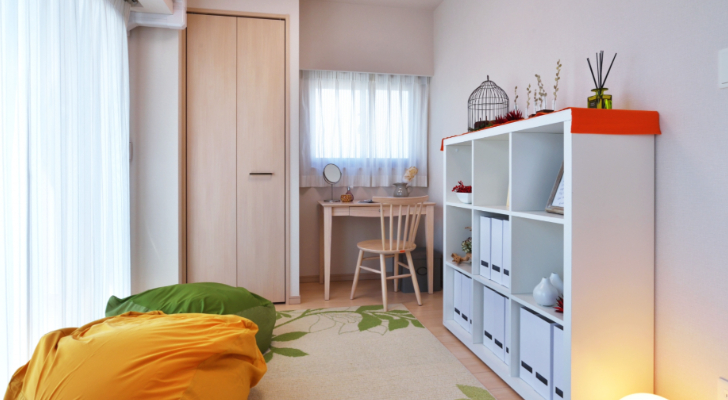
working from home
In today’s fast paced world, where the lines between work and personal life are increasingly blurred, it’s crucial to cultivate a home environment that fosters well-being and productivity.
By intentionally designing your living space, managing your time effectively, reducing stress, and promoting healthy habits, you can create a sanctuary that nurtures your physical, mental, and emotional well-being.
1. Designing a Conducive Workspace or Home Office
A well-designed workspace or home office can significantly impact your productivity and overall job satisfaction. Here are some recommendations to create a conducive environment.
- Dedicated Space: Designate a specific area in your home solely for work. This separation helps establish boundaries and minimizes distractions. If space is limited, consider converting a spare room, a corner of your living room, or even a closet into a functional workspace.
- Ergonomic Setup: Invest in ergonomic furniture, such as an adjustable desk and chair, to promote proper posture and reduce physical strain. Ensure your workspace is well-lit, either by natural light or task lighting, to prevent eye strain.
- Organization and Decluttering: Maintain an organized and clutter-free workspace. Implement storage solutions like shelves, cabinets, or file organizers to keep your work area tidy and minimize visual distractions.
- Personalization: Incorporate personal touches that inspire and motivate you. Display artwork, plants, or photographs that create a positive and uplifting atmosphere.
- Noise Control: If you live in a shared space or a noisy environment, consider investing in noise-canceling headphones or soundproofing materials to minimize distractions.
2. Time Management and Work-Life Balance
Effective time management is crucial for achieving a healthy work-life balance. By prioritizing tasks and allocating time wisely, you can ensure that both your professional and personal responsibilities receive the attention they deserve.
- Prioritize and Plan: Start each day by creating a to-do list and prioritizing tasks based on importance and urgency. Use tools like calendars or productivity apps to schedule your time effectively.
- Set Boundaries: Establish clear boundaries between work and personal time. Communicate these boundaries with colleagues, clients, and family members to manage expectations.
- Take Breaks: Incorporate regular breaks into your routine to recharge and prevent burnout. Step away from your workspace, stretch, or engage in a brief activity that brings you joy.
- Delegate and Outsource: Learn to delegate tasks or outsource responsibilities when possible. This can help alleviate stress and free up time for other priorities.
- Practice Self-Care: Make time for activities that nourish your mind, body, and soul. This could include exercise, hobbies, or simply spending quality time with loved ones.
3. Reducing Stress and Creating a Relaxing Retreat
A home should be a sanctuary where you can unwind and recharge after a long day. By incorporating elements that promote relaxation and reduce stress, you can create a peaceful retreat within your living space.
- Declutter and Organize: A cluttered environment can contribute to feelings of overwhelm and anxiety. Regularly declutter and organize your living spaces to create a sense of calm and order.
- Incorporate Nature: Bring the outdoors in by adding plants, natural materials, or nature-inspired decor to your home. Exposure to nature has been shown to reduce stress and improve overall well-being.
- Aromatherapy: Utilize essential oils or scented candles to create a calming and soothing atmosphere. Lavender, chamomile, and ylang-ylang are known for their relaxing properties.
- Soft Lighting: Opt for warm, soft lighting instead of harsh overhead lights. Candles, lamps, or dimmable bulbs can create a cozy and inviting ambiance.
- Mindfulness Practices: Designate a quiet space in your home for meditation, deep breathing exercises, or yoga. These mindfulness practices can help reduce stress and promote relaxation.
4. Promoting Healthy Habits and Self-Care Routines
Creating a home environment that supports your well-being goes beyond physical spaces. Incorporating healthy habits and self-care routines into your daily life can significantly contribute to your overall well-being and productivity.
- Establish Routines: Develop morning and evening routines that prioritize self-care activities like exercise, journaling, or mindfulness practices. Routines can provide structure and a sense of control.
- Prioritize Sleep: Ensure your bedroom is conducive to restful sleep by minimizing electronic devices, maintaining a cool temperature, and investing in comfortable bedding.
- Meal Planning: Plan and prepare nutritious meals in advance to avoid the temptation of unhealthy choices. Consider setting up a dedicated space in your kitchen for meal preparation.
- Exercise Space: Designate an area in your home for physical activity, whether it’s a yoga mat, a treadmill, or a simple open space for bodyweight exercises.
- Digital Detox: Establish technology-free zones or times in your home to disconnect from screens and promote mindfulness and presence.
Summary
By implementing these strategies and recommendations, you can create a home environment that nurtures your well-being, boosts productivity, and fosters a harmonious work-life balance.
Remember, creating a conducive living space is an ongoing process that requires intentionality and commitment. Embrace the journey and celebrate the small victories along the way.



